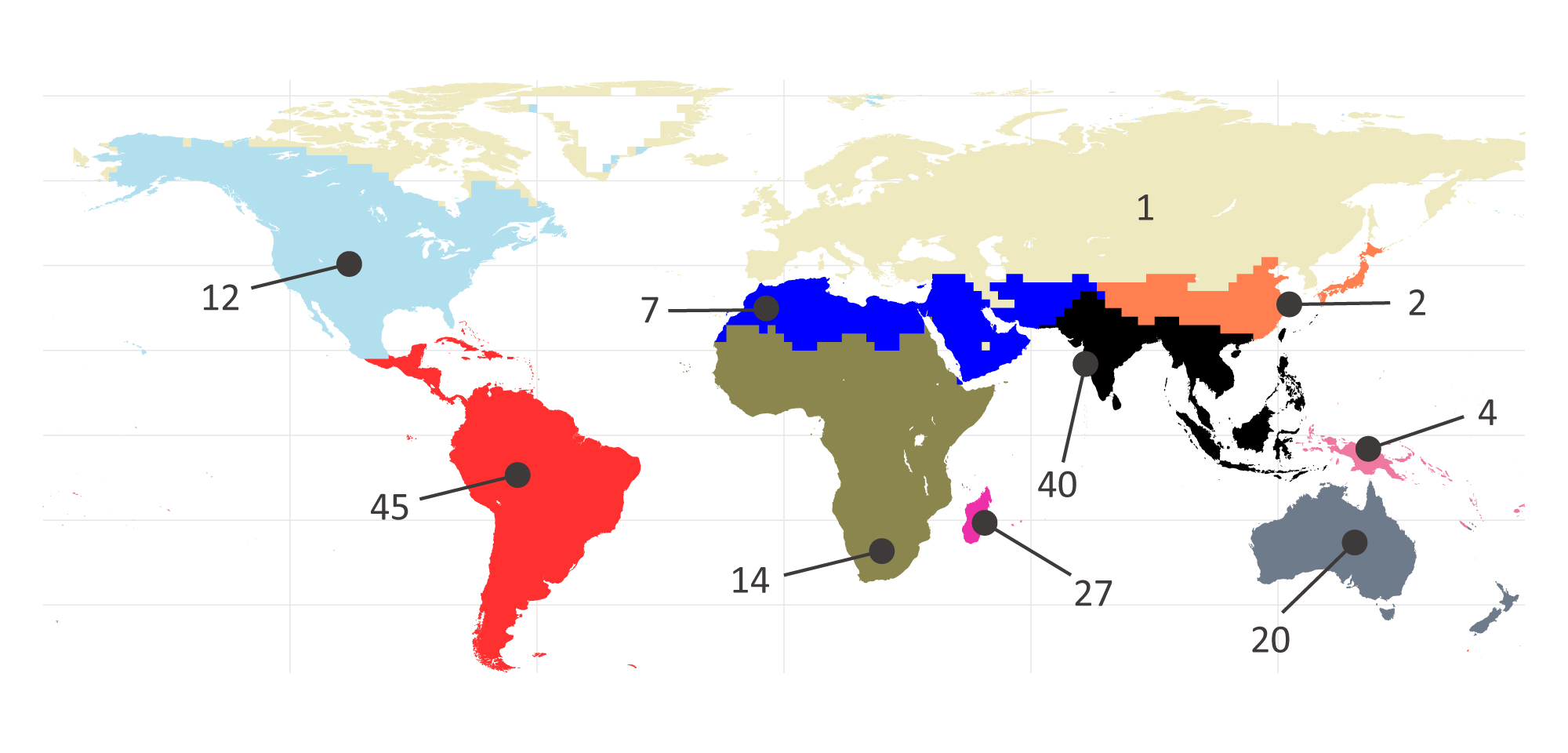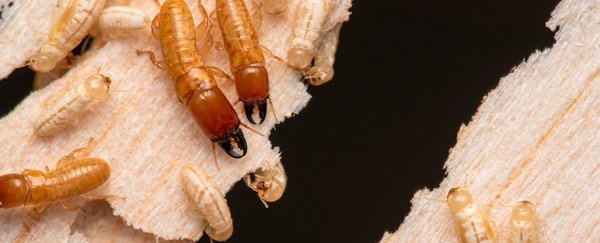Many families of land animals live separated by hundreds of kilometers of wide and vast oceans. Explanations for how they got so far from each other are as varied as the animals themselves.
In recent times, many animals have hitched rides with humans traveling around the world, on our vehicles, food products, and on our bodies.
Before this, as far back as hundreds of millions of years ago, the continents were connected, and animals could just walk across the land.
But in-between then and now, there seems to have been a lot of floating and hoping for the best.
A new study has determined that the drywood termite family (Kalotermitidae) is an expert at this, and has successfully crossed the ocean at least 40 times in the last 50 million years.
Termites are flying creatures, and although you might imagine they could take the trip by air, they're actually pretty lousy at flying over long distances, so they're better suited crossed vast stretches of water via a different form of transport.
"They're very good at getting across oceans," says lead author of the study Aleš Buček, an evolutionary geneticist from the Okinawa Institute of Science and Technology Graduate University (OIST) in Japan.
"Their homes are made of wood so can act as tiny ships."
The researchers highlight the Krakatau islands to illustrate this. A devastating volcanic eruption in 1883 left the whole area desolate, but multiple species of drywood termites had recolonized the area after just 100 years.
"The dispersal ability of Kalotermitidae stems from their lifestyle, as they usually nest in and feed on single pieces of wood, which can float across oceans as rafts," the team writes in their paper.
"Most extant species of Kalotermitidae are unable to forage outside their nesting wood piece. Instead, they make small colonies in wood items like dead branches on living trees."
To work this out, the team didn't set up drywood termites on little boats and let them set sail (although that would have been adorable). Instead, they looked at the drywood termite family Kalotermitidae's genetics and charted how their mitochondrial DNA traveled around the world.
Analyzing hundreds of worldwide drywood termite samples collected over the last 30 years or so, the researchers focused on around 120 species of the termite, representing 27 percent of the diversity of Kalotermitidae, and representing almost all of the different genera, which gave the team a lot of information to work with.
 A map of the world showing where the termites were collected. (Buček et al., MBE, 2022)
A map of the world showing where the termites were collected. (Buček et al., MBE, 2022)
"Drywood termites, or Kalotermitidae, are often thought of as primitive because they split from other termites quite early, around 100 million years ago, and because they appear to form smaller colonies," says Buček. "But very little is actually known about this family."
By genetically tracking their family tree, the researchers found that the earliest common ancestor lived 84 million years ago. This means that some of the early splits in the family tree might have happened over land before the supercontinent Gondwana finished breaking up.
However, most of the 40 or so splits happened less than 50 million years ago, which suggests that these little land-hoppers were traveling across the sea. More recently, human voyages probably helped the termites along too.
Importantly, the analysis also suggests we've been a little too harsh on these little guys and their 'primitive lifestyle'. The Kalotermitidae normally nest in small groups on a single piece of wood, which many researchers have interpreted as the 'original' way termites lived, before larger and more complex colony organizations evolved later.
According to the researchers, however, some of the oldest lineages in the genetic family foraged on multiple wood pieces, suggesting that the single-piece-of-wood strategy could be a relatively new adaptation, possibly driven by competition.
"This study only goes to highlight how little we know about termites, the diversity of their lifestyles, and the scale of their social lives," says OIST ecologist Tom Bourguignon.
"As more information is gathered about their behavior and ecology, we'll be able to use this family tree to find out more about the evolution of sociality in insects and how termites have been so successful."
The research has been published in Molecular Biology and Evolution.
